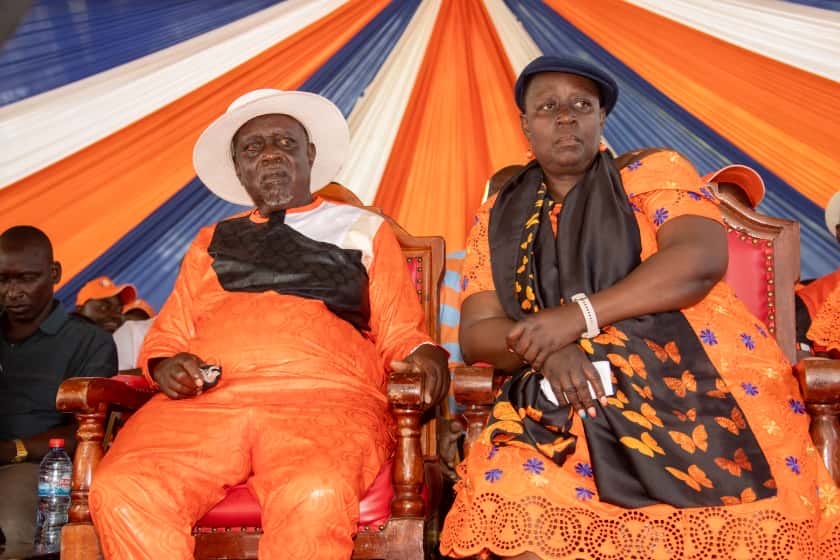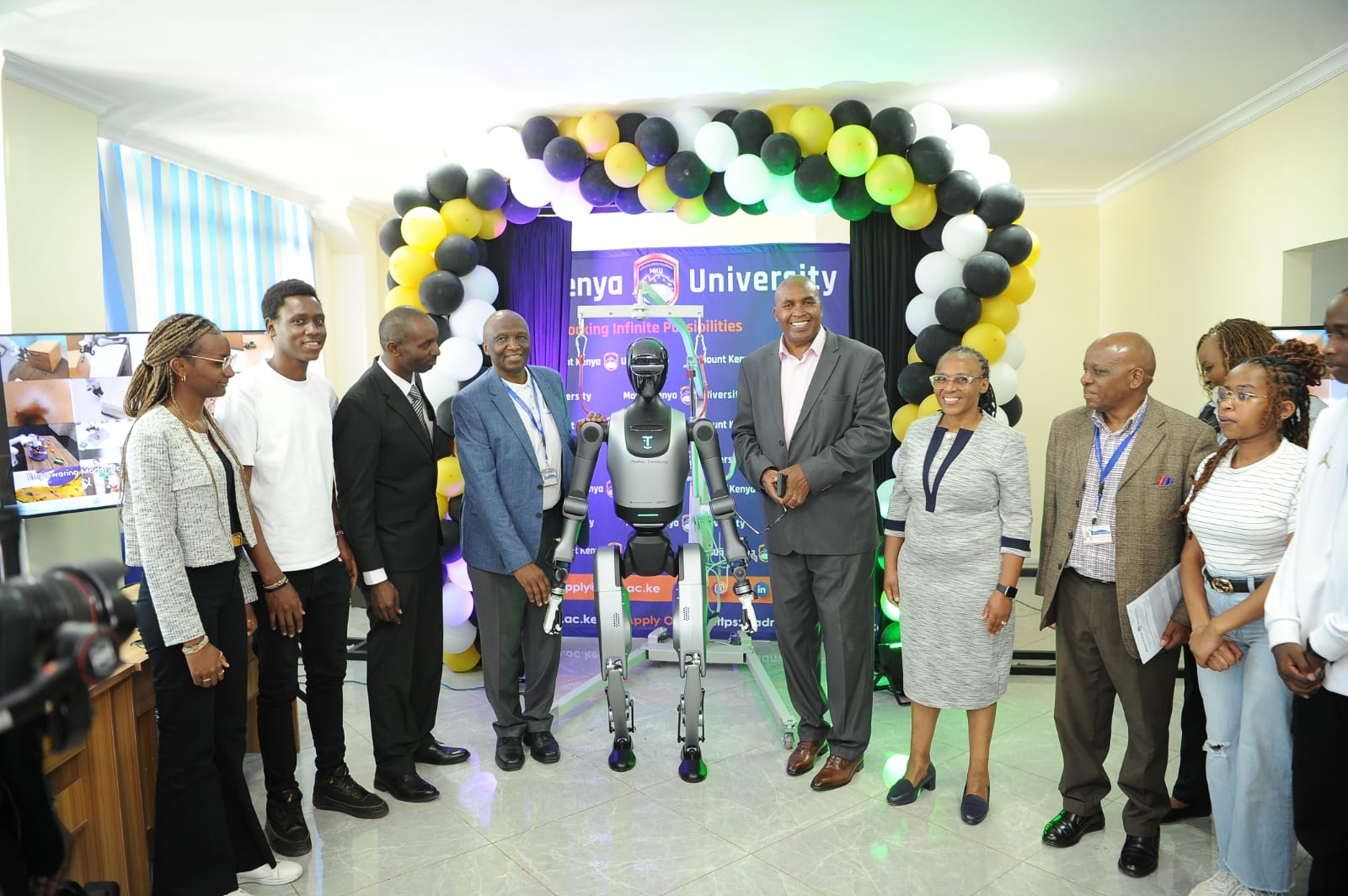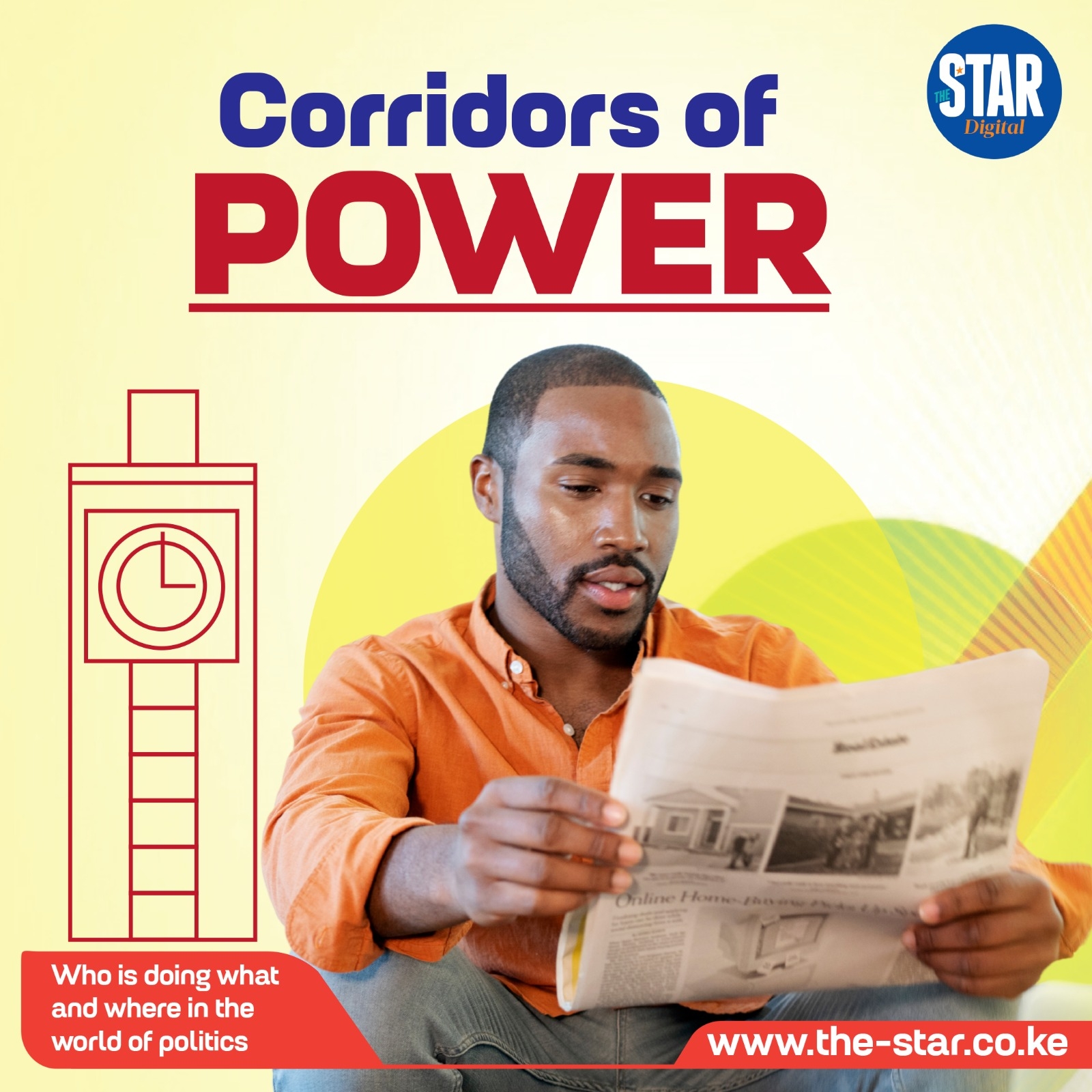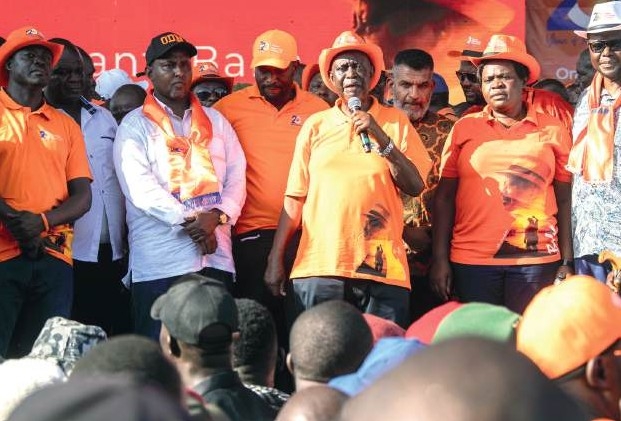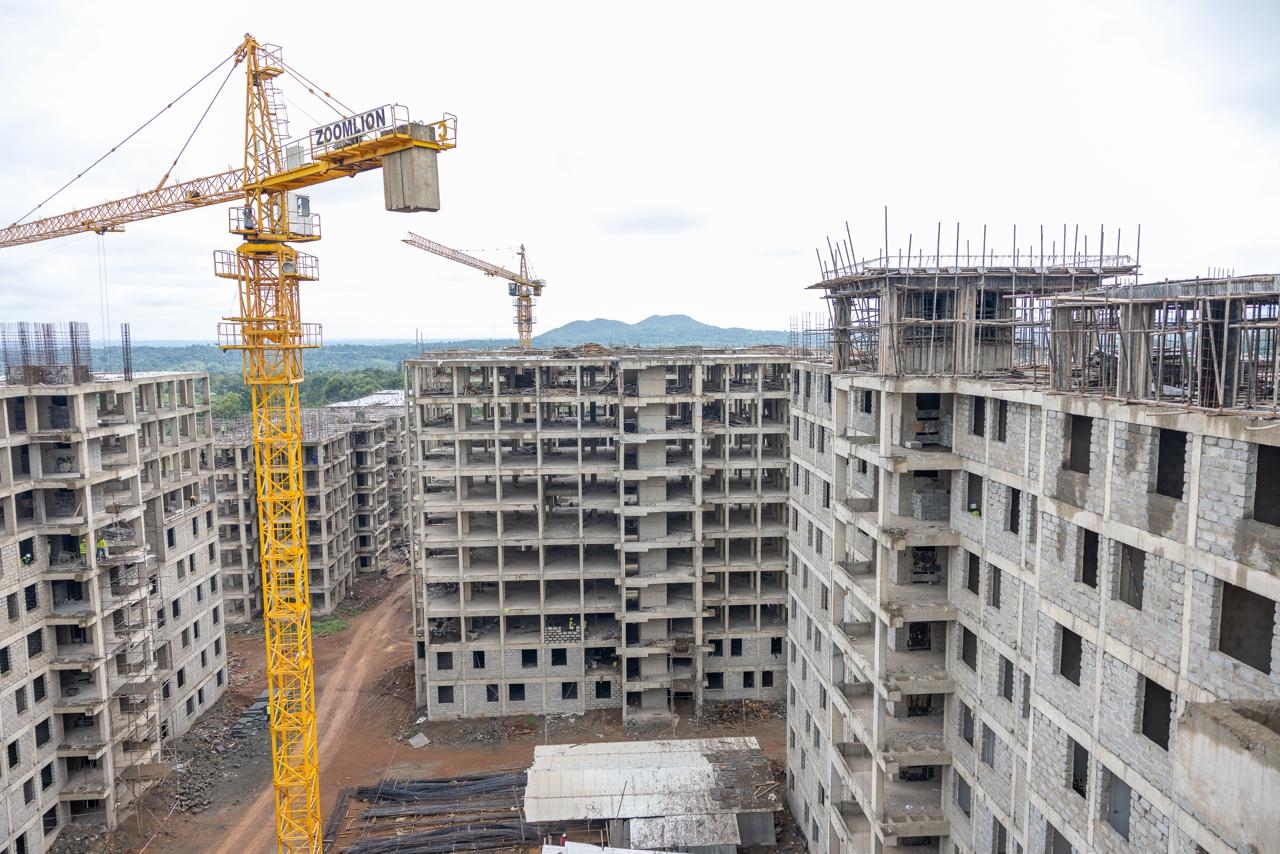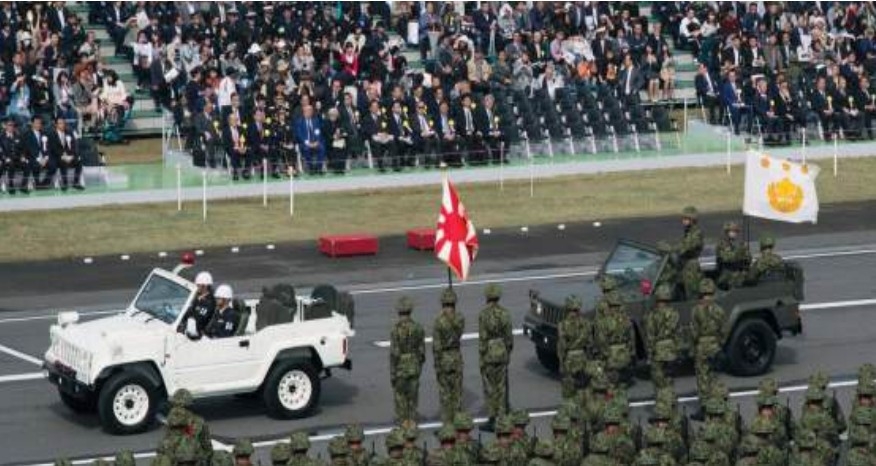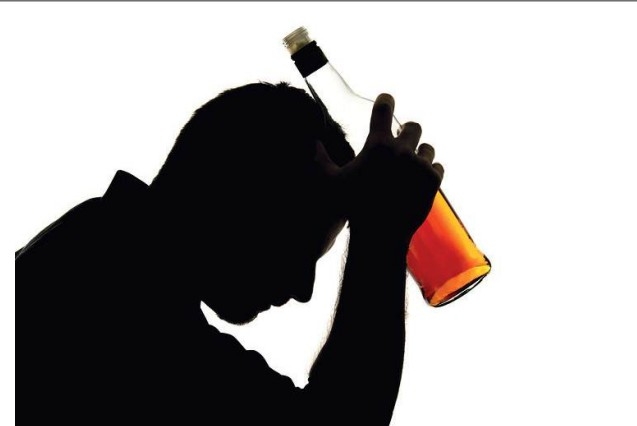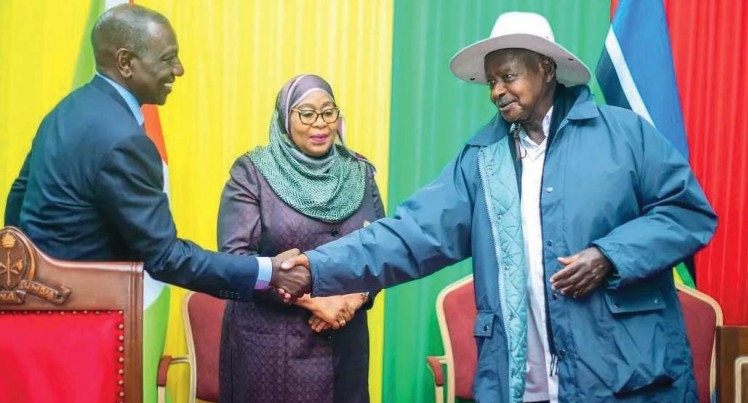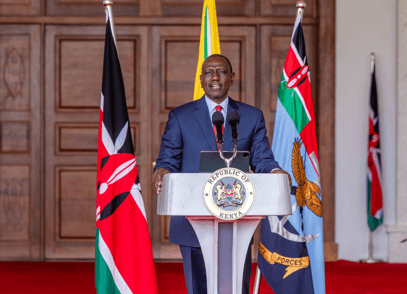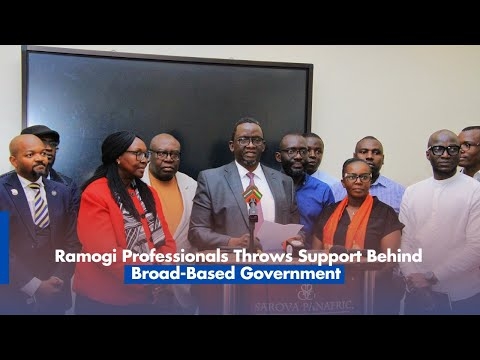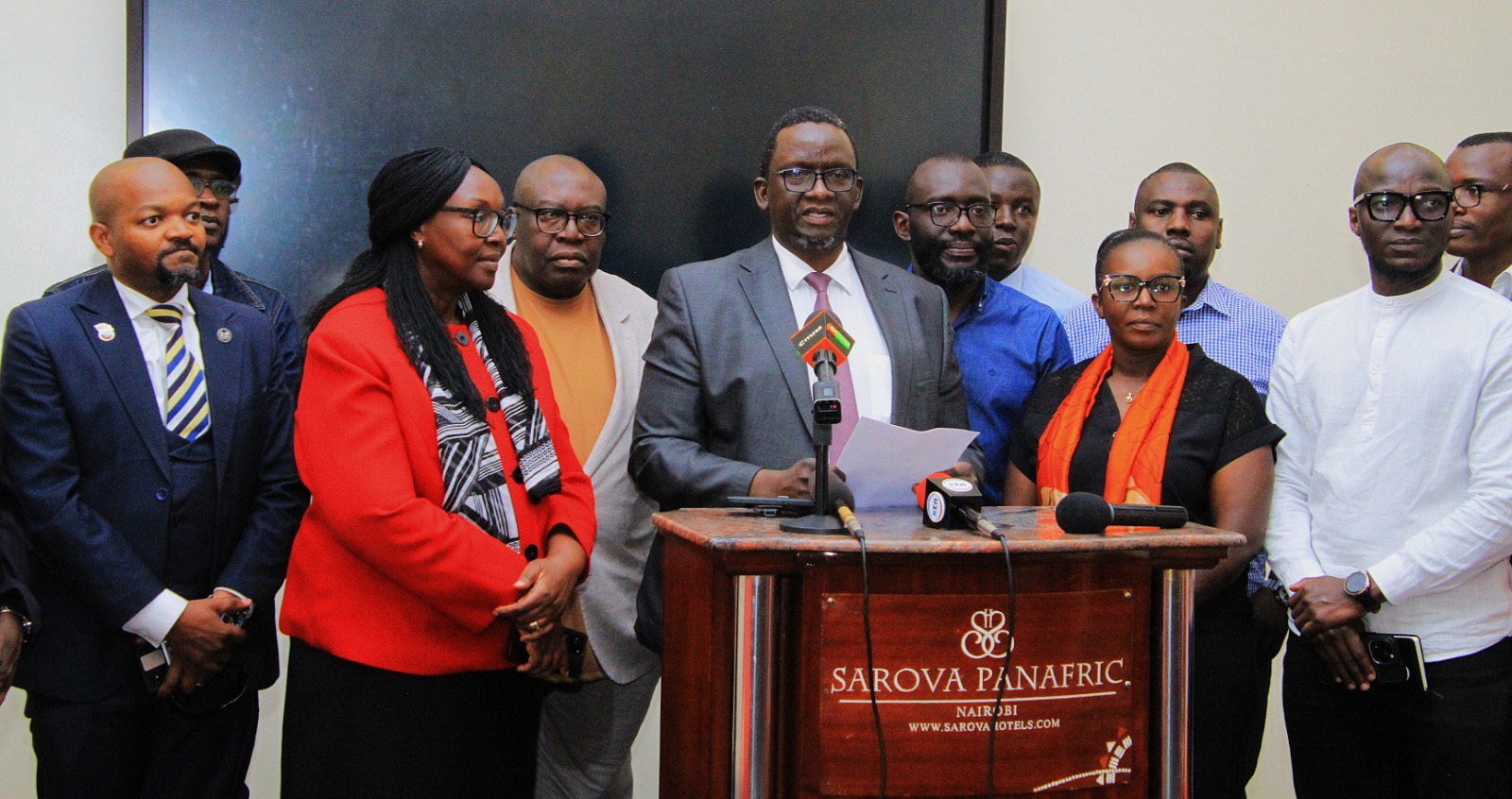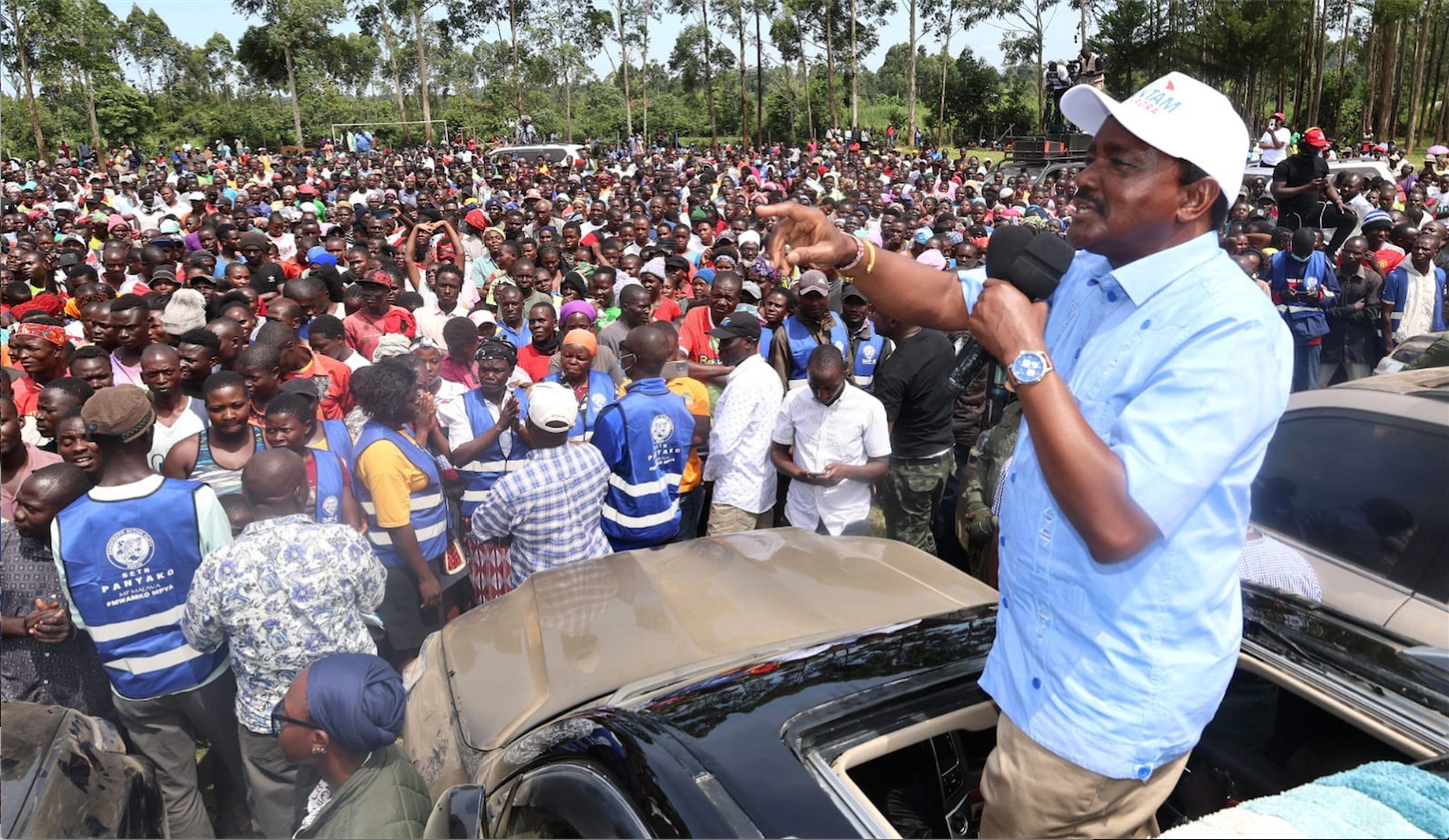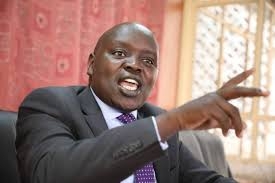In October 1952, colonial governor Evelyn Baring declared a state of emergency in Kenya after senior chief Waruhiu wa Kung’u, one of the strongest supporters of British presence, was assassinated. Allegedly by Mau Mau but critics, including his family, have since claimed white settlers killed him to trigger the emergency.
Either way, the colonial government arrested 180 alleged Mau Mau leaders and subjected six of them to a stage-managed trial in Kapenguria before imprisoning them. The ‘Kapenguria Six’ were Jomo Kenyatta, Bildad Kaggia, Kung’u Karumba, Fred Kubai, Paul Ngei and Achieng’ Oneko.
If they were the political face of the movement, the rebel leaders had already fled into the forest to wage a guerrilla warfare. They included Field Marshals Dedan Kimathi, Musa Mwariama, Muthoni Kirima and Simon M’Marete, alias Baimungi, and Generals Stanley Mathenge, Kurito ole Kisio and Waruhiu Itote, alias General China. Many had served in labour units or support arms of the British in World War II, a few had actual combat experience, but they all had courage against great odds.
In 1953, the colonial government banned national political parties and any political party in Central Kenya, further frustrating efforts to fight oppression peacefully. The colonialists resorted to collective punishment to break the will of the Mau Mau, and the guerrillas gave as good as they got.
Maina Macharia, a trade unionist from Murang’a who had sworn allegiance to Mau Mau, is adamant when reflecting in retrospect about the path the Mau Mau took. He says the British would not listen to Africans; they “only heard the panga”.
TIT FOR TAT
“When you go to a war, it is war,” Maina says. “When the British came and started shooting us, killing us, assassinating us. And then they also recruited our Kikuyu, those who did not take the oath and even those who did.”
Author Ngugi wa Thiong’o alludes to this internal conflict in A Grain of Wheat, where he says the biggest weapon unleashed by the colonialists against Kenyans “was not the Maxim gun. It was division among them”.
Maina counts among the traitors the Home Guards (paramilitary force), the itungati (loyalists, translation: junior elders), the taitai (educated Africans who worked at the CID, translation: tie-wearers) and the kamatimu (former Mau Mau, translation: warriors).
“Then what happened if you are confronted with Home Guards? You have to fight!” he says, singling out a group that was dreaded for its own reign of terror and intimidation, including rape.
This tit for tat is documented by various historians. Caroline Elkins notes that the British rounded up people en masse in camps, villages and other outposts, castrated men, raped women and broke stubborn detainees by isolating them, torturing them and forcing them to work. More than 1,000 alleged rebels were hanged, although many of them never bore arms.
A window into the times is the Hola massacre of March 1959, when 11 detainees were beaten to death by prison warders in Tana River county and dozens more injured.
John Newsinger puts it this way: “The scale of the repression unleashed in the Kenya emergency remains unprecedented in the history of post-war British military operations.”
Bethwell Ogot tells the other side of the story, noting that the Mau Mau beheaded and mutilated civilians, tortured targets before murdering them, bound bodies in sacks and dropped them in wells, burned victims alive, gouged out eyes and split open the stomachs of pregnant women.
An infamous example is the ‘Night of the Long Knives’ in March 1953, when the Mau Mau massacred 97 people in Lari, Kiambu county, mostly women, children and elderly people related to the Home Guard.
“There was no reason and no restraint on both sides,” Ogot sums it up.
Nonetheless, just as abolitionist Frederick Douglass believed that power concedes nothing without a demand, Maina insists, “We’d still be a dominion of the British if not for the Mau Mau.”
PAYING THE PRICE
From 1952 to 1953, Maina was the custodian of Mau Mau documents. His role was to keep all documents, such as copies of letters written to the colonial office and other places. “All memoranda written by Mau Mau,” he says. These letters grew the legend of Dedan Kimathi as he claimed credit for Mau Mau’s victories against the mighty British Empire.
Maina was also one of five persons who manned the Mau Mau Central Committee Secretariat, which later became the Central War Council Secretariat. The other four were Isaac Gathanju, Johnstone Muthiora, Pio Gama Pinto and Mwinga Chokwe.
“We had to collect money to buy arms and ammunition, and clothes, and everything that was to be used in the forest,” Maina says, adding that women played a key role in feeding the Mau Mau. “Then we had to select young people who were to take them to the forest, and remain there.”
At the time, he had quit his job in Mombasa and returned to Nairobi, where he got a job at Mumbi Tutorial College, a private college Africans had set up. He lived in Bahati, a poorer part of the city, where Africans were condemned to sharing communal toilets and washing blocks.
In September 1953, he was arrested by the CID along with a fellow teacher and three students, and accused of typing “illegal publications”. There was a proliferation of literature at the time in an information war despite the bulk of the African population being illiterate.
Some 11,000 copies of political writings by vernacular publisher Gakaara Book Service had been found at the corridor where Maina lived. The papers had been collected by someone who was to rent an office, but the CID used it to frame Maina.
Maina was taken to court and sentenced to two years’ hard labour but released by the High Court on appeal, only to be rearrested a week later, in October 1953. This time he was fetched from his home. “Someone must have told them where I lived,” he says.
He was whisked away to the CID headquarters in Nairobi, then located at Serena Hotel, but his name was not entered in the Occurrence Book. Instead, he was taken to a room similar to a magistrate’s, where the same officer who arrested him was the prosecutor and the judge.
Under interrogation, Maina was asked to reveal the names of rich people in Murang’a; he doesn’t know why but possibly because they were suspected of funding the Mau Mau. He feigned ignorance, saying he’d come from Mombasa and hadn’t been to Murang’a since he was young. That “refusal to cooperate” sealed his fate.
I’m not going to die in detention. At the end of emergency, I will meet you here
NEVER SAY DIE
It was summarily decided that Maina would be shot dead at Mutitu wa Ngai Ndeithia (Ngong forest), Karen. But then came an announcement over the radio.
“All officers, wherever you are, go to Duncan’s house.” This was a ranch in Kileleshwa owned by farmer-businessman Duncan Eskine, which also had a bar for Europeans only. “There is war between Mau Mau and the soldiers.” Heeding the summons, the officers who were to execute Maina upped and left, leaving him under the watch of a guard with a Sten gun.
When they came back the following morning, they transferred him to Kileleshwa police station. As Maina left, one officer, the assistant superintendent, told him, “You’re lucky you did not die last night, but you are going to die in detention.”
“I’m not going to die in detention,” Maina retorted. “At the end of emergency, I will meet you here.”
Thus began his merry-go-round in detention camps around the country, from Athi River to Mackinon Road, Manyani, Saiyusi, Kodiaga, Kandongu, Karaba, Gathigiriri, Murang’a and finally Kangema. These camps were euphemistically called ‘rehabilitation’ centres, purporting to ‘cleanse’ detainees of their mistaken beliefs through hard work and confession.
One such confession came at Maina’s first stop, in Athi River. A Mau Mau member who had surrendered, Kimani Ruo, blurted out his name during the so-called ‘screening’ exercise, which officers used to look for Mau Mau sympathisers.
“Maina Macharia is among the people who were typing Mau Mau memoranda,” he said. “And I hear he is in this camp.” He also named Isaac Gathanju, Maina’s colleague in the rebel secretariat. Luckily, the interrogators did not fetch them.
Despite this scare, Maina kept up his activism by smuggling newspapers from camp to camp using ‘night baskets’ used for trash, and briefing fellow inmates on news from outside, even fabricating it if necessary “to give them hope not to give up”. He also taught illiterate inmates how to read and write, using the ground as a blackboard.
Maina saw one man, whom he only recalls as Munogoki, commit suicide in Karaba after a beating, by gulping down hot porridge. And another, whose name escapes him, getting whipped to death in Gathigiriri. Many more died, but those two are the ones who were in his group, which also included Mau Mau Central Committee chairman Eliud Mutonyi and liaison officer Josiah ‘JM’ Kariuki.
Luckily for Maina, he lived to tell his tale. He was set free in February 1959, a year before the state of emergency was lifted in January 1960, when fighting ended. Maina returned to Nairobi and, as promised, he met the CID officer who taunted him, now retired from police. The man had a Securicor office at Rajab Manzil House in Nairobi CBD, the same place where Maina was setting up the Kiambu Freedom Party.
It wasn’t a happy reunion as the officer demanded Maina be kicked out. But Maina sought the intervention of Dr Julius Kiano, one of the few elected Africans in the Legislative Council, and who also happened to hail from Murang’a. Kiano warned the Asian landlord that the building would be taken over by the government, and, in a panic, the Asian evicted the former officer instead.
It was not yet ‘Uhuru’, but finally, Maina could claim a right of place in his own country. But had that radio announcement at the CID headquarters been a few minutes late, it would all have been a dream.
“Before they left, they had killed four persons, one of whom I knew. He was also called Maina.”
The final part of this series on Maina Macharia will run in the Big Read on Monday.



